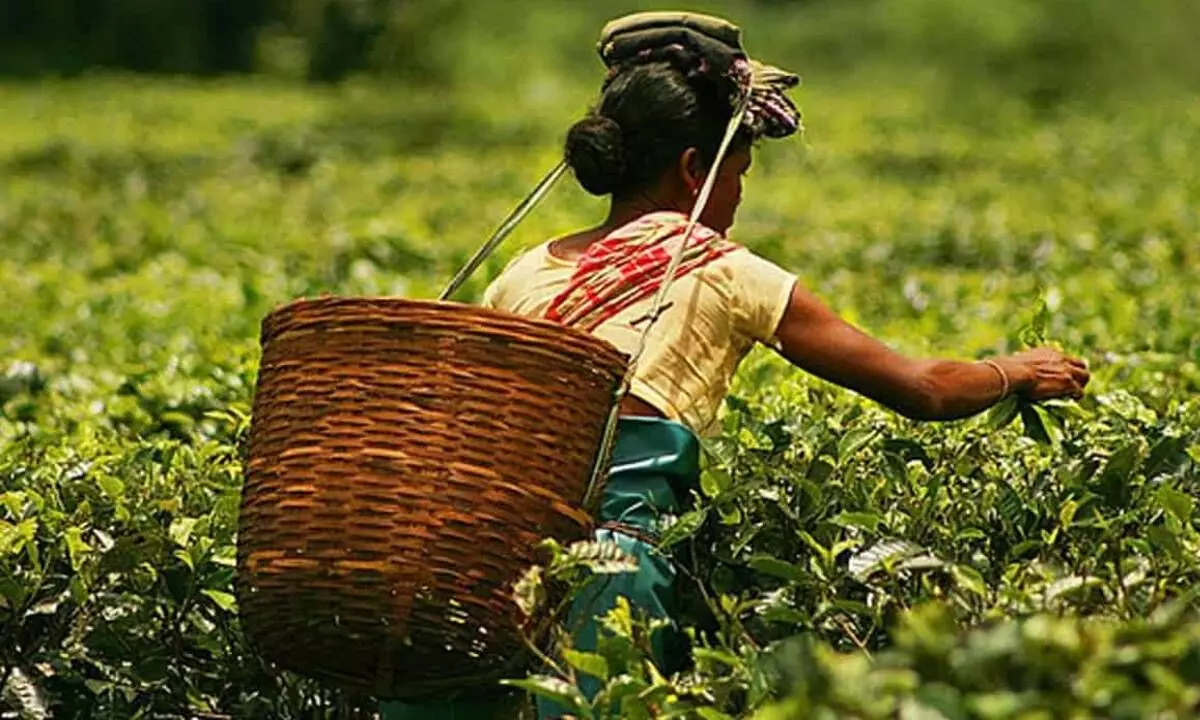Small tea growers touch 51.91% of tea production, bigger players crying foul
The share of small growers in India’s tea total production has now touched 51.91%. The bigger players are crying foul. They say they are being denied a level-playing field, small players, with no proper knowledge, will scuttle the export market.
image for illustrative purpose

The share of small growers in India's tea total production has now touched 51.91%. The bigger players are crying foul. They say they are being denied a level-playing field, small players, with no proper knowledge, will scuttle the export market.
The rising dominance of small growers in India's tea production has left large producers sore at the lack of a level-playing field and the dwindling quality of output.
In 2021, out of the total tea production of 1343.06 million kg, the share of small growers stood at 51.29 percent, up from 49.28 percent in the pre-COVID days of 2019. In the six months to September 2022, the share is marginally up, to 51.91 percent, as per Tea Board data.
The contribution of small growers has been steadily growing in the last two decades, from around 15 percent at the turn of this century to over half the share.
In the previous century, tea production was totally dominated by big players. Even now, in terms of acreage, they are way ahead of small growers.
What is behind the growth of small growers?
"After the rising incidences of terrorist attacks on tea plantations in north-eastern India, the government started encouraging small tea growers, as a means of promoting self-employment. Till then, the presence of small growers was limited mostly to southern India. This caught on and their contribution stabilised over the years,'' said A E Joseph, tea producer and former president of United Planters' Association of Southern India.
The big growers are left fuming as they have to bear greater expenses and follow statutory regulations. "The big or regulated tea growers have to follow legal and statutory liabilities, comply with pesticide norms, deal with higher employment and overheads and pay wages even during the three non-production winter months in north India,'' pointed out Ajay Jalan, president of the Tea Association of India.
Small growers, on the other hand, have less employment overheads and expenses and get higher yields from comparatively younger bushes, he said. While the large estates have tea bushes 80 to over 100 years old, the small growers pluck from bushes 20-30 years old, usually managed by the family. But since they don't follow the pesticide and fertiliser norms, quality is often compromised.
'Quality getting affected'
"Around half of the small growers do not have proper knowledge of growing tea and don't know what chemicals to spray. Eventually, this affects quality, thus hitting exports. The domestic market will be flooded with tea, which will push prices down, if consumption doesn't increase,'' said Venkitaraman Anand, chief executive and wholetime director of Harrisons Malayalam Ltd.
A major share of small growers goes to bought leaf factories (BLF), which survive on such teas as they don't own big tea estates. But even they have become concerned about quality. Nilgiri in Tamil Nadu has around 200 BLFs which are dependent on small tea growers.
``Ever since machine plucking started, the daily output of a worker has gone up from about 25 kg to 70-90 kg. But the quality of tea leaves has declined,'' said J Kumar, president of Nilgiri Bought Leaf Tea Manufacturers Association.
During the pandemic years, when tea prices zoomed, following lower production and high demand, BLFs used to pay Rs 30 per kg to the small growers. The prices have declined to Rs 25-17.50 per kg for different grades of tea. Unlike the big tea companies, BLFs have lesser overheads and a lower processing cost of around Rs 30 per kg. So even at the auction price of Rs 150 per kg, they make a neat profit.
``But though small growers don't have any social cost to bear, they still have to pay a wage of Rs 350 daily for a worker in Tamil Nadu. With prices below Rs 25 per kg, it is unviable for them to make tea,'' said Kumar, who is also a small tea grower.
Anand points out that since small growers don't pluck regularly, the weight of the tea shoots they supply to BLFs is higher and hence get more money as the payment is based on weight. ``We have to follow all regulations and with lower prices at the auctions, we aren't left with enough funds to plough back. With the withdrawal of subsidies, we are looking at survival rather than revival,'' he said.
But the output of the small tea growers will increase over the years as their cultivation spreads to new areas where the young bushes will give more yield. ``Perhaps the only solution is to raise the prices of the teas through trade promotion and exploration of newer markets abroad,'' said Sujit Patra, secretary of Indian Tea Association.

